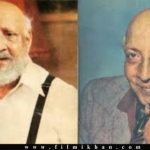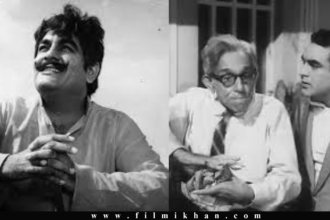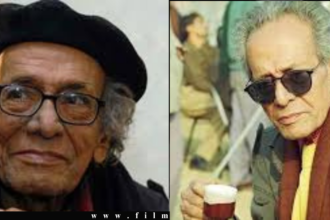
Rahman, born on June 23, 1921, in Lahore, was a distinguished actor in the golden era of Hindi cinema. Known for his suave demeanor, sophisticated charm, and impeccable acting skills, Rahman made a significant impact on Indian cinema from the 1940s to the 1970s. His journey from Kabul to the heart of Bollywood is a story of talent, perseverance, and dedication.
Rahman, originally named Rehman Khan, hailed from a prominent family in Afghanistan. His father was a Royal Afghan Army officer, and the family moved to India when Rahman was young. He pursued his education in Aligarh and was passionate about the performing arts from a young age. After his graduation he joined the Royal Air Force and got training in Poona as a pilot but later he bored with the life of Air Force. He started searching career in films at Bombay.
Rahman’s foray into Hindi cinema began with a minor role in the film “Chand” (1944). However, it was his performance in the same year film “Hum Ek Hain” that caught the attention of filmmakers and audiences alike. His striking looks and natural acting abilities made him a promising newcomer in the industry.
The 1950s and 1960s marked the peak of Rahman’s career. He delivered memorable performances in a series of hit films, including “Pyaasa” (1957), where he played the role of Vijay’s (played by Guru Dutt) loyal friend. His portrayal in “Chaudhvin Ka Chand” (1960) further solidified his status as a leading actor.
Rahman’s ability to bring depth and nuance to his characters made him a favorite among directors and audiences. He was an integral part of the Guru Dutt team, and most known for his roles in films such as Pyar Ki Jeet (1948), Badi Behen (1949), Pardes (1950), Pyaasa (1957), Choti Behen (1959), Chaudhvin Ka Chand (1960), Sahib Bibi Aur Ghulam (1962), Dil Ne Phir Yaad Kiya (1966) and Waqt (1965). He also did key roles in Baharon Ki Manzil (1968), Gomti Ke Kinare (Meena Kumari’s last film, 1972), Dushman (1972) and Holi Aayi Re.
He also acted with Madhubala in Paras (1949) and Pardes (1950); both the films were critical and commercial successful at box office.
His filmography is adorned with several classic films that have stood the test of time. Some of his most notable works include:
“Pyaasa” (1957): A landmark film in Hindi cinema where Rahman’s performance as a supportive friend was widely appreciated.
“Chaudhvin Ka Chand” (1960): His role in this romantic drama showcased his versatility and command over emotional scenes.
“Sahib Bibi Aur Ghulam” (1962): Rahman played a pivotal role in this critically acclaimed film, further establishing his acting credentials.
“Dil Ne Phir Yaad Kiya” (1966): His performance in this film was lauded for its emotional depth and intensity.
Rahman’s personal life was as intriguing as his on-screen persona. He was known for his refined tastes and sophisticated lifestyle. Rahman was married to prominent actress Suraiya, and their love story was the talk of the town. Despite his busy career, Rahman was known to be a devoted family man.
His contribution to Hindi cinema is immense. His performances have inspired generations of actors, and his films remain classics that are cherished by cinephiles. Rahman’s legacy is characterized by his effortless charm, versatility, and the ability to portray a wide range of characters with finesse.
In the later years of his career, Rahman transitioned to character roles, bringing the same level of dedication and skill to his performances. He passed away on November 5, 1984, but his legacy lives on through his timeless films.
Rahman remains an iconic figure in the annals of Hindi cinema. His journey from Kabul to becoming a celebrated actor in India is a testament to his talent and perseverance. As an actor who redefined sophistication and charm on screen, Rahman will always be remembered as one of the evergreen charmers of classic Hindi cinema.







